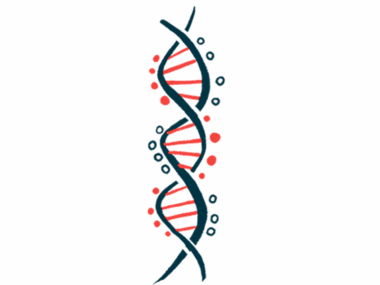RAB32 gene mutation tied to higher Parkinson’s risk, study finds
Variant found in families with common ancestral origin
Written by |

People who carry a specific mutation in the RAB32 gene have a higher risk of developing Parkinson’s disease, researchers at the University of Florida found.
The mutation, called RAB32 Ser71Arg, was identified in 16 individual families from different ethnic groups and increased the activation of the LRRK2 protein, a known player in Parkinson’s disease. The mutation was associated with a 13.2 times increased risk for Parkinson’s.
The study was published by the team of Matthew J. Farrer, PhD, who has made key discoveries involving genetic mutations associated with the risk for Parkinson’s, including those in the LRKK2 and VPS35 genes, which also activate the LRRK2 protein.
“It’s not a coincidence, it’s convergence,” Farrer, a professor of neurology and investigator at the university’s McKnight Brain Institute, said in a university press release. “It is obvious many proteins encoded by major genes for Parkinson’s disease are involved in the same pathway, and these pathogenic [disease-causing] variants also augment the immune response.”
The study, “RAB32 Ser71Arg in autosomal dominant Parkinson’s disease: linkage, association, and functional analyses,” was published in The Lancet Neurology.
Genetic data tracked to ancestral family
Parkinson’s disease is caused by the progressive dysfunction and death of dopaminergic neurons, the nerve cells responsible for producing dopamine, a signaling molecule neurons use to communicate that’s involved in motor control.
In some 10%-15% of Parkinson’s cases, patients carry a genetic mutation that increases their risk of developing the disease. However, according to the researchers, only in about a third of patients is the disease associated with specific disease-causing mutations.
Mutations in the LRRK2 gene linked to the activation of the enzyme are among the most common genetic causes of Parkinson’s. These mutations are commonly associated with mitochondrial dysfunction, a mechanism often implicated in the disease. Mitochondria are small cellular structures responsible for a cell’s energy production.
The researchers analyzed clinical and genetic data from 8,847 patients and 65,693 unaffected participants, using a combination of public and private patient databases. Initially, the new gene variant was identified in nine individuals from three families, originating from Canada and Tunisia.
Then, with the participation of worldwide collaborators, 13 more patients in eight countries were identified. The family members — from Canada, France, Germany, Italy, Poland, Tunisia, Turkey, U.K., and U.S. — appear to be “distant cousins,” originating from a single ancestral family that moved around the world, the university said.
All affected people had Parkinson’s disease, with a mean age of 54.6 years at disease onset, and two-thirds had a familial history of the disease.
Experiments showed that the mutated RAB32 activates the LRRK2 kinase, indicating that genetically distinct causes of familial disease share the same mechanism.
“Our study provides a unique, genetically stratified cause of Parkinson’s disease that is distinct from LRRK2 and is likely to both benefit from and provide unmet insight into LRRK2 function and inhibitor testing within the clinic,” the researchers wrote.
Farrer said one limitation of the study is the need to accurately define the mutation’s “penetrance,” meaning the probability of developing Parkinson’s in people who have inherited the mutation, something that will require more participants to determine.
The team is now working to assess the worldwide frequency of the RAB32 Ser71Arg variant to estimate where and when the variant appeared, in collaboration with the Global Parkinson’s Genetics Program. Farrer has also, in collaboration with The Michael J. Fox Foundation, designed novel mouse models to further study the relationship of the variant to Parkinson’s disease.






